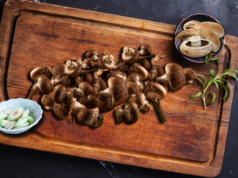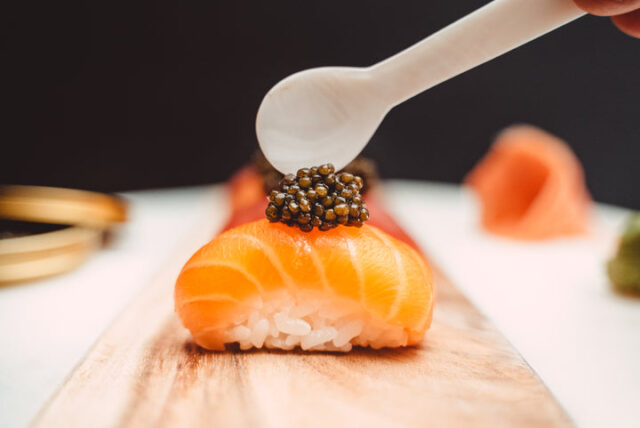
When was the last time you indulged in the lavish and exquisite flavors of caviars from around the globe? The truth is that not a lot of people get this pleasure or this type of experience. So, why not splurge and go all-out at least every now and then?
Consider the various varieties of caviar as thorough testing of your taste buds; each has a distinct flavor, texture, color, and saltiness. Do you sound intrigued? The truth is that you obtain this by learning about the numerous regional caviars around the world. Continue reading this blog post to find out how these exotic foods compare to one another, and to find out which one is our favorite.
How has its popularity spread worldwide?
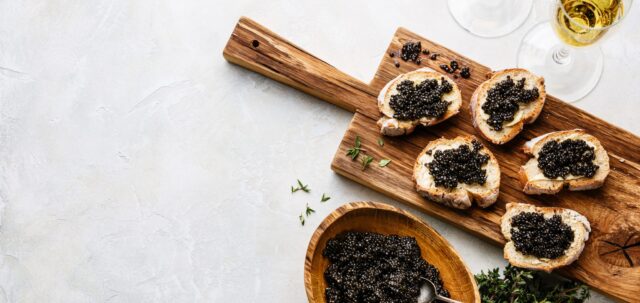
Caviar, a symbol of luxury and sophistication, has become increasingly popular due to a convoluted network of historical events and cultural exchanges.
While the ancient Persians and Greeks who originally indulged in caviar likely knew of its alleged medicinal virtues, it was the Russians who first catapulted the delicacy into the spotlight.
Their zeal for the luxury item contributed to its elevated status as a symbol of power, prestige, and beauty.
Once 19th-century European chefs began including caviar in their dishes, the luxury ingredient quickly rose in popularity among Europe’s upper classes. Nonetheless, caviar did make its way over the Atlantic during the Belle Époque, when it became a symbol of the wealth and prosperity of the United States during the Gilded Age.
By skilfully navigating the complicated webs of culture, politics, and geography, caviar has risen from its humble beginnings by the Caspian Sea to become one of the most cherished and sought-after gourmet pleasures worldwide!
What is caviar made of?
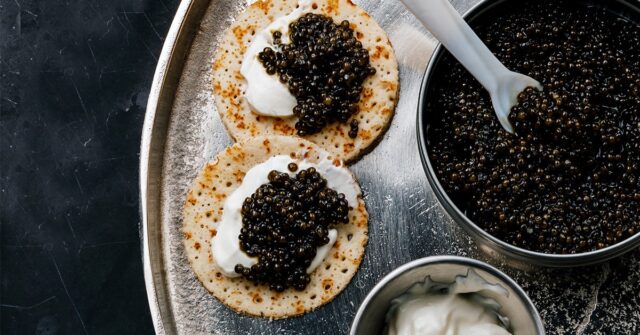
This is something that a lot of people think about and wonder about. Well, did you know that the fundamental component of caviar is fish eggs or roe that have been lightly salted?
The only source of “true caviar”—a word used to refer to any of the 26 species of fish in the family Acipenseridae—is sturgeon roe.
The three most common types of sturgeon caviar are beluga, osetra, and sevruga.
- The beluga whale’s caviar – given that it is obtained from the critically endangered beluga sturgeon and is known to be of the best quality and flavor, this caviar is among the most expensive. Its huge eggs have a buttery, creamy, and nutty flavor, and range in hue from light silver-gray to dark black.
- The medium-sized, grayish-brown eggs of Osetra caviar are distinctive, as is the saltiness, which has undertones of toasted grains and dried fruit.
- The Sevruga caviar is the smaller, harder, and more delicate member of the caviar family thanks to the ideal balance of butter and brine in these lustrous gray eggs. We will focus on it mostly throughout the article.
What to know about sevruga?
Only the highest quality Sevruga is grown between the Caspian and Black Seas.
Sevruga is a type of sturgeon that is smaller than the related Osetra and Beluga.
This caviar is one of the most expensive despite having fewer eggs than the more prestigious Beluga and Ossetra varieties.
Since the Stellate sturgeon is the most common and can reproduce quickly, Sevruga Caviar is the most accessible and affordable of the top imported varieties of sturgeon caviar.
Sevruga Caviar stands out for being delicious and smooth. In 2018, Sevruga Caviar was responsible for over 25% of global income.
In recent years, this variety of caviar has risen in popularity as more casual consumers prefer its less fishy flavor and deeper color.
Caviar’s star is also on the rise as more people learn about the health benefits of eating it. It’s a great source of protein, healthy fats, and selenium.
One serving of caviar contains the recommended daily allowance of vitamin B12 for an adult.
The finest caviar has a firm texture and a flavor profile that comprises a creamy, buttery flavor with a light fish finish, for which it is known worldwide.
How to serve sevruga + where to buy it?
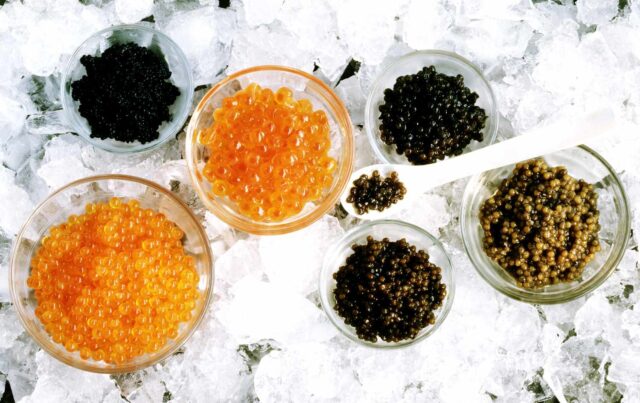
If you want to experience Sevruga caviar for yourself, pick an upmarket restaurant in your neighborhood, make a reservation, and see what they have to offer. You can also prepare it on your own and at home. In fact, you can find exceptionally high-quality sevruga caviar right here, and enjoy its deliciousness! The taste of Sevruga caviar is typically smooth but with a distinct hint of saltiness and brine. This means that it might take a couple of trials & errors to get it just right! Anyone who wants to enjoy high-quality meals and who is ready for a new experience will enjoy this site, along with its pricing.
Why is it so expensive and hard to find?
Caviar’s price has been mostly determined by the scarcity of wild sturgeon since the late 19th century. You can also thank our economy for making it high through the rough.
Authentic caviar was extremely expensive because fewer sturgeon were available due to the increased demand for caviar at the time.
Even now, sturgeons as a species have not fully returned.
According to the World Wide Fund for Wildlife (WWF), all surviving species of sturgeon face extinction due to habitat destruction, illegal commerce in wild caviar, and the obstruction of migration pathways.
Caviar is more difficult to source, making it more expensive.
While technological improvements make sustainable sturgeon farming possible, the costs associated with breeding and harvesting remain high.
The high cost of production, the total scarcity of sturgeon products, and the great demand for caviar are all reflected in the market price.
If you want to enjoy your next culinary experience and you wish to try something new – you can’t go wrong with sevruga. Anyone who loves fish or seafood will appreciate its flavors, despite the price tag. Let us know how your cooking goes, we can’t wait to see you enjoy your next meal!



